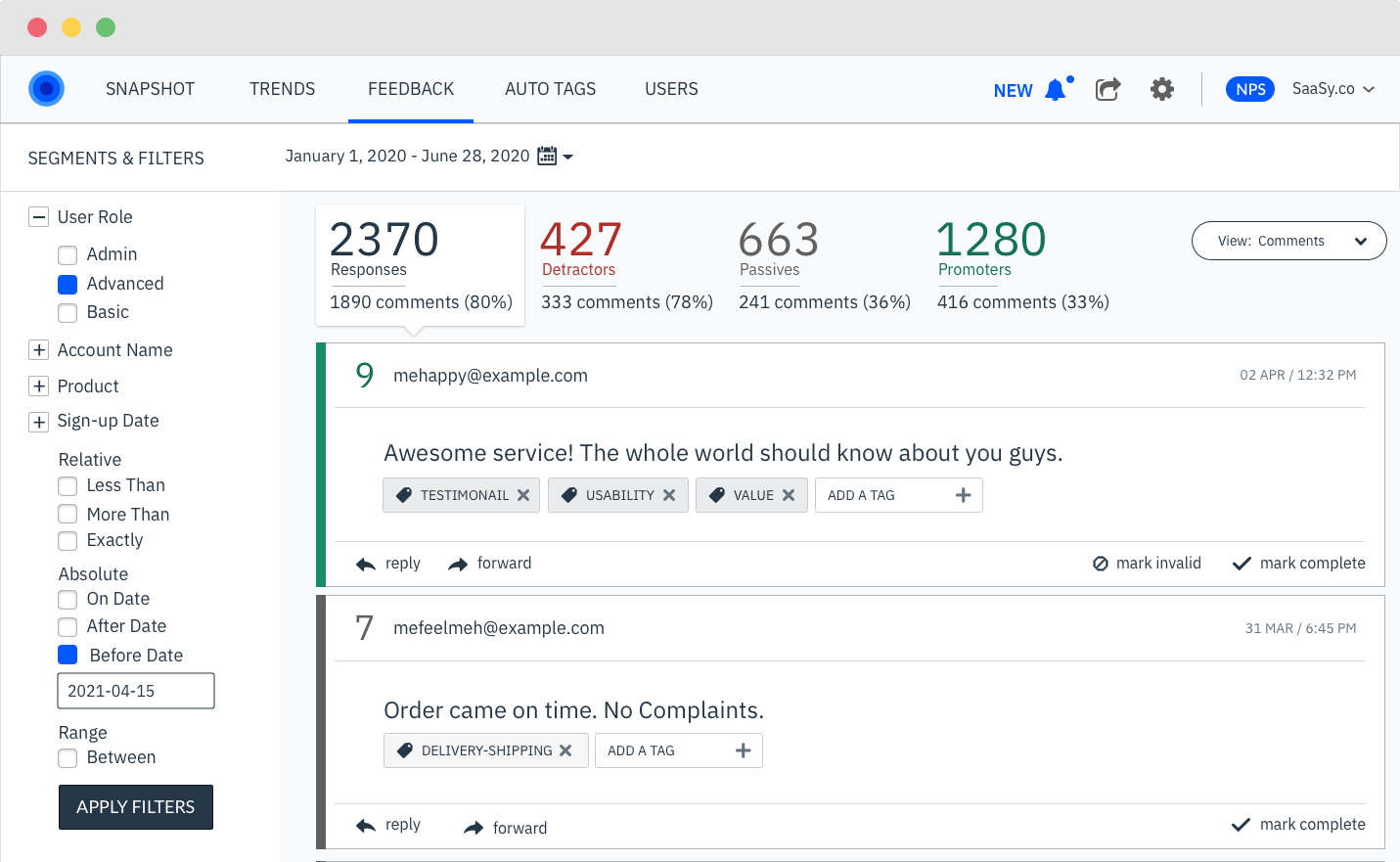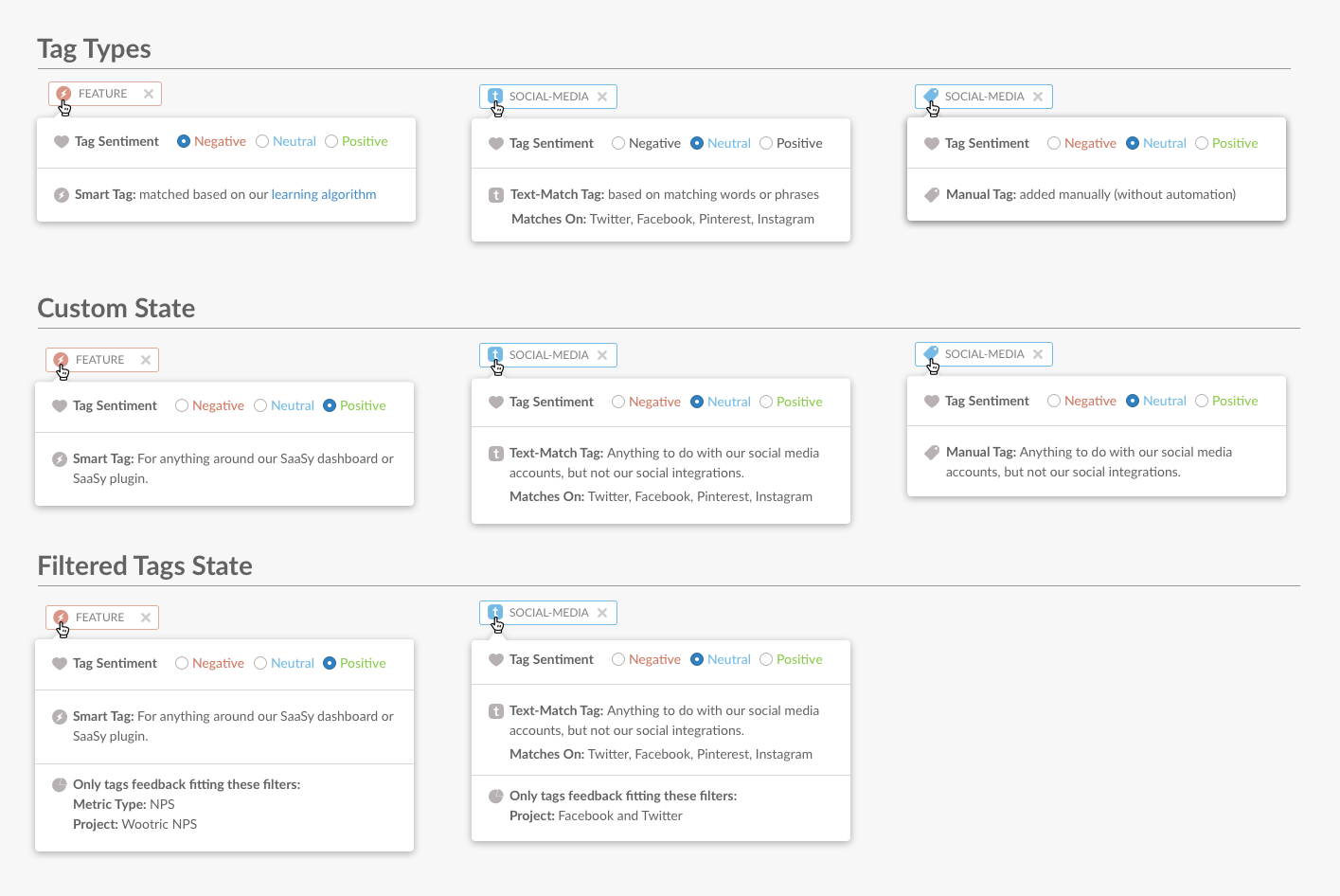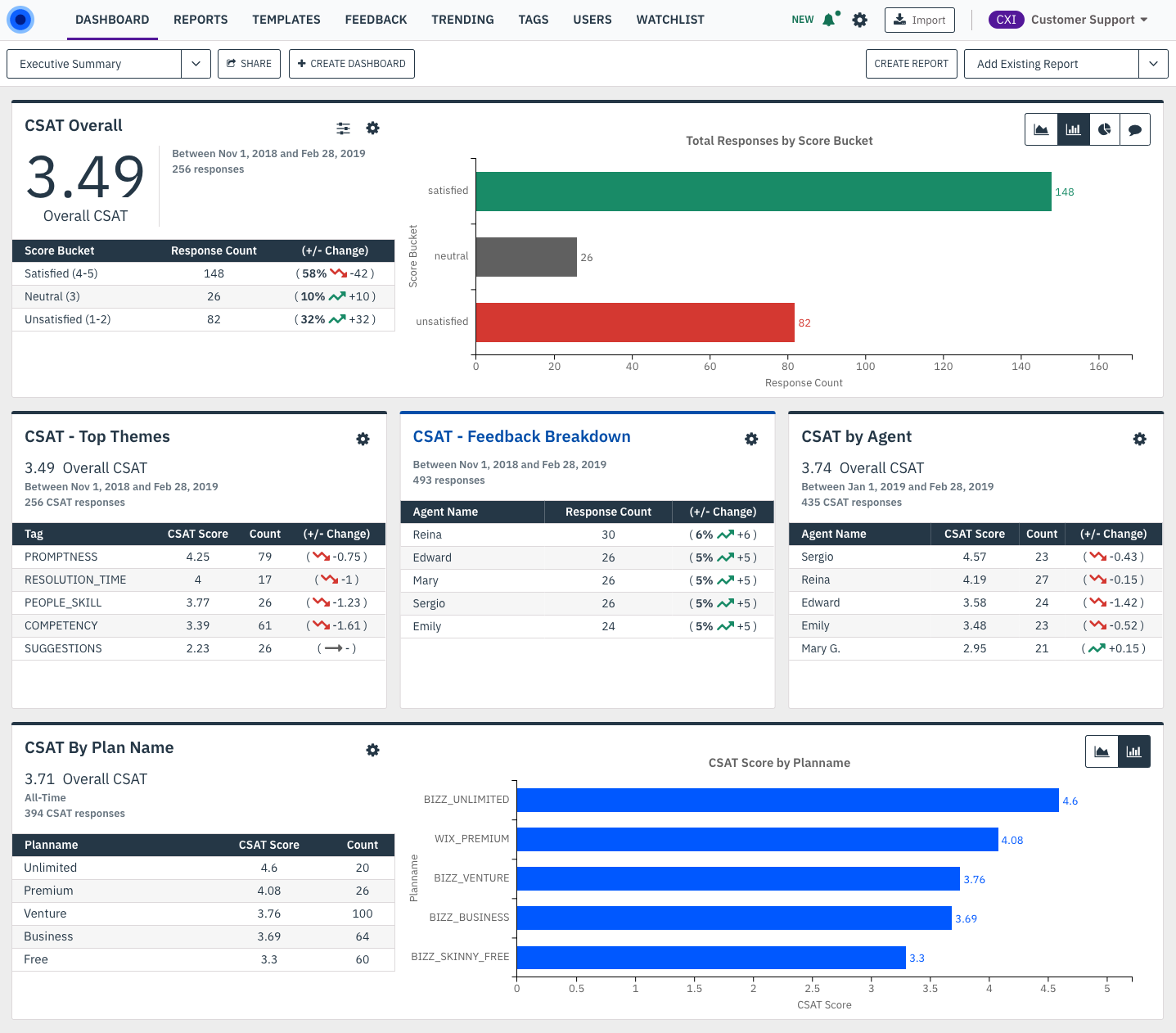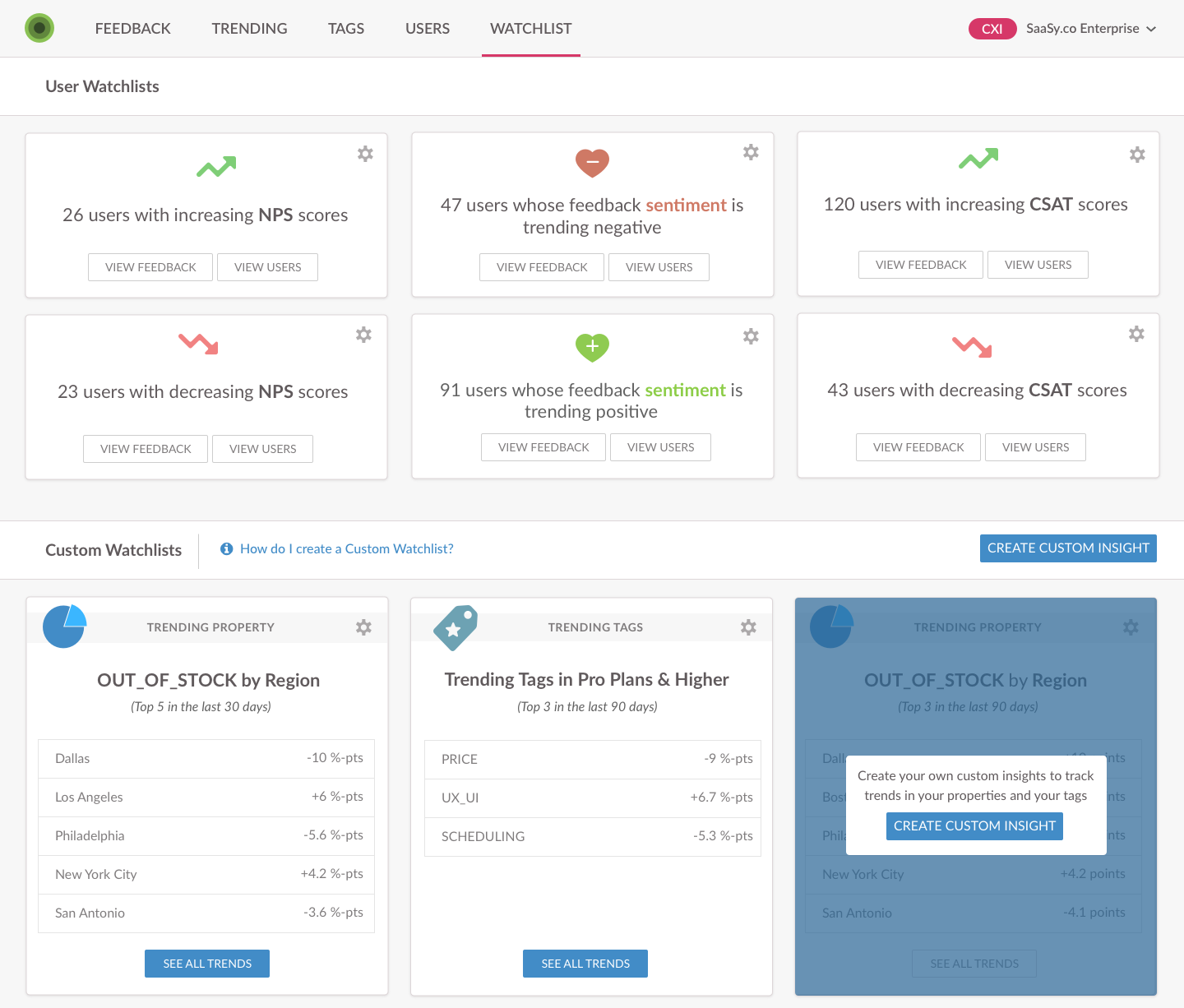Wootric from Startup to Acquisition
Lead Product Designer · Nov 2015→Present
Where it all began... collecting feedback
Wootric began as a multi-channel micro-survey platform that integrated into most other platforms (Salesforce, Intercom, Slack, Zendesk, etc.) to give customers relevant customer feedback when they need it.
Since then, Wootric has transitioned into being an Enterprise Feedback Management platform where insights and sentiment are delivered with the help of machine learning. When once we had thousands of user feedback to analyze, we now had the problem of sometimes millions of feedback to understand with thousands coming in daily. There needed to be a way for users to utilize this data, ask questions, and be able to find their answers.
To help the customer, we developed ways to slice and dice their data and to organize their data more thoughtfully.

Wootric's Survey Dashboard where intial customer feedback is gathered.
The User Problem
As a user, we have too much customer feedback to understand. Without a data scientist, we have no way of analyzing it. How can Wootric help us categorize, analyze, and gather insights within their platform?
The Solution: CXInsights and Executive Dashboards
CXI or Customer Experience Insights was a company initiative to create a new platform that was devoted to taking feedback from any source, in any amount, and giving you a dashboard to analyze it.
(1) Auto-Categorizing w/ Tags and Sentiment
To start the process, we needed to categorize the feedback into meaningful groups. From their, the data could tell more of a story. For that, we used Tags, which utilized three different types.
- Smart Tags were designed to match based upon Machine Learning and plenty of training data.
- Text Match Tags were made to allow users to add text-specific phrases for tags to match to like "Credit Card" when the tag is BILLING.
- Manual Tags were for those who wanted to add there own categories without automation.
On top of using Tags, Sentiment was also applied to each feedback and tag-- giving the user even further categorization.
Because this is a lot of information, every tag could be hovered over to understand how it works, what sentiment it is, and how it was applied.

Examples of Wootric's Tag Types and the hovers to help users understand them.
(2) Customizable Executive Dashboards
The feedback we received each had it's own unique story. For that, each deserved to have their own unique dashboard. So we developed Executive Dashboards where each report you create, customize, and place on your dashboard. They can report on NPS/CSAT/CES/Any Score, Tag Sentiment, changes in Tags, Properties, etc.

Wootric CXI Executive Dashboard example for a Customer Support team.
(3) Watchlist Insights
Watchlists were created when users complained that they would just like simple lists of feedback and users who they should look into. Those were users whose scores were changing or whose sentiment on their feedback had changed. If a score is getting lower or sentiment worse, it may be a sign of future churn.

Wootric Watchlists for following score, sentiment, and other trends in your users and feedback.
The Outcome
Wootric, since making CXI has landed our largest customers and biggest deals. It changed the direction of Wootric from a survey platform to Enterprise Feedback Management.
Seeing that growth and product potential, InMoment acquired Wootric in December of 2020. Together we're hoping to bring Wootric's CXI Dashboard to even more customers and grow CXI's potential.



